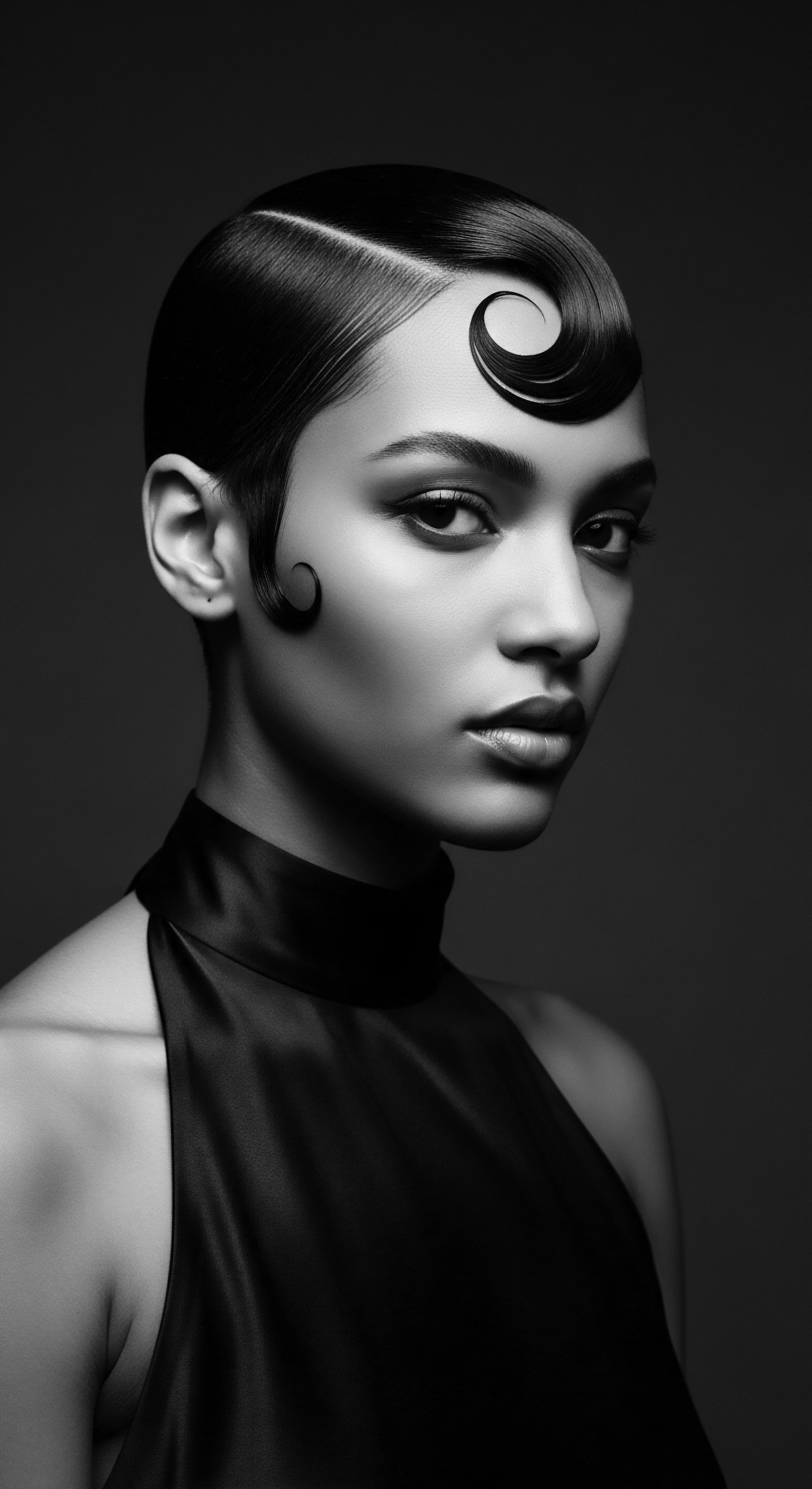
Roots
Picture ancient Earth, sun-drenched and vibrant, stretching across continents as our earliest ancestors walked its terrain. Think of the intense equatorial sun, beating down with a power that shaped not only skin but also the very strands crowning human heads. Textured hair, in its myriad curls and coils, stands as a testament to this ancient world, a living legacy of evolutionary ingenuity.
It is a biological marvel, designed by the elements to thrive where life first sprung forth. For those of us with hair that spirals and kinks, our very strands hold the stories of those distant lands, a quiet hum of ancestral wisdom.
The journey into understanding textured hair begins at its source, tracing back through millennia to the ancestral climates that sculpted its unique architecture. This is not simply a lesson in biology; it is an exploration of heritage, a connection to the landscapes and survival strategies of our forebears. The physical attributes of textured hair speak volumes about the environments it was crafted to navigate.
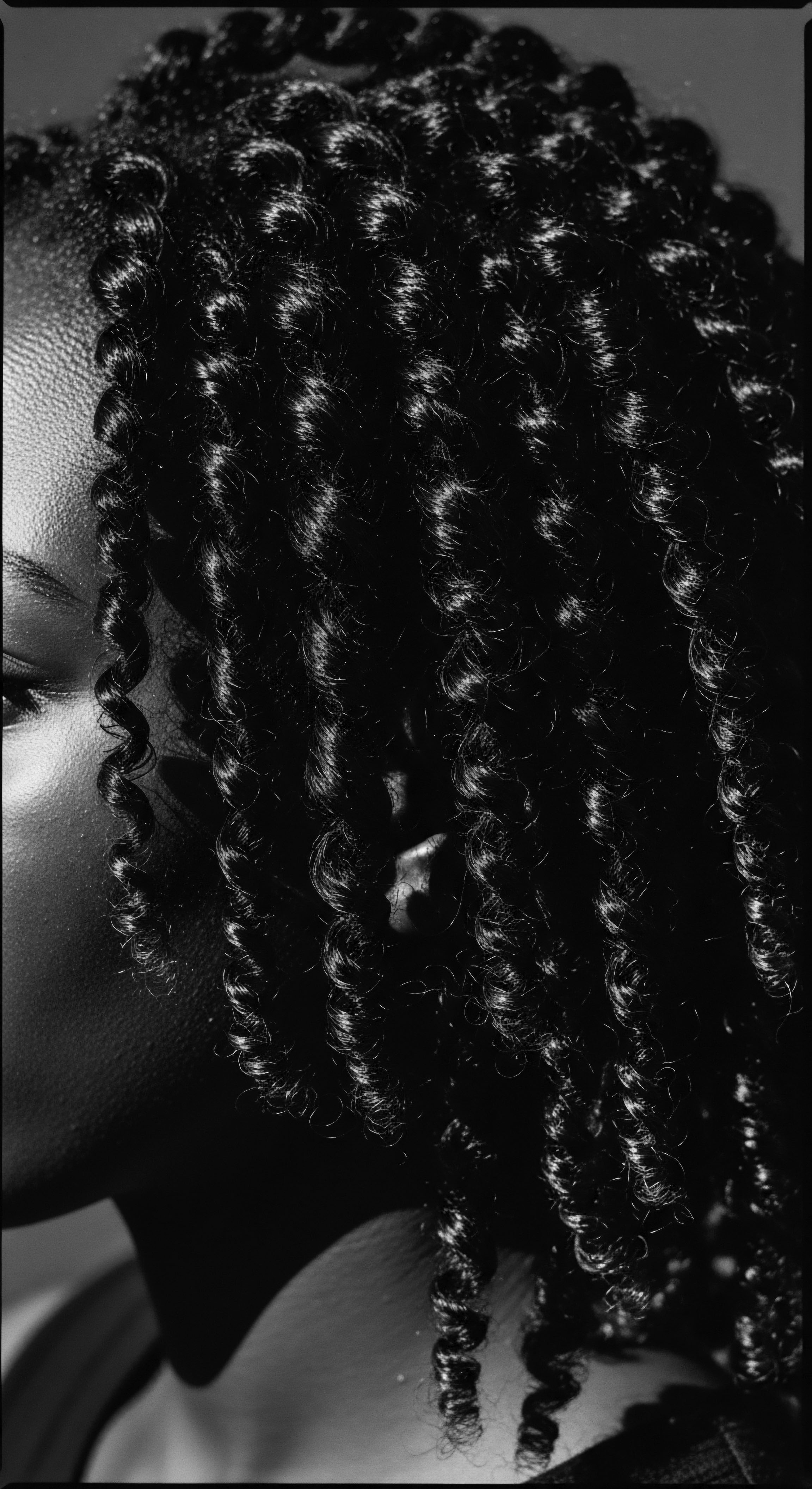
Hair Anatomy and Physiology from an Ancestral Lens
At the core of understanding textured hair lies its singular anatomy, a design honed by the sun and humidity of equatorial regions. Unlike straighter hair forms, each textured strand emerges from an elliptical or oval-shaped follicle. This distinctive follicular shape dictates the curvature of the hair shaft itself, causing it to spiral as it grows. Imagine a ribbon twisting as it lengthens; this is akin to how a textured strand develops.
This structural difference accounts for the varied curl patterns seen across Black and mixed-race communities, from loose waves to tight coils. The internal arrangement of keratin proteins within these curved strands also plays a part, contributing to the hair’s strength and flexibility, even while rendering it more susceptible to breakage if mishandled.
Early humans, as they adapted to life in equatorial Africa, faced constant, intense solar radiation directly overhead. The brain, a heat-sensitive organ, required exceptional protection. Nina Jablonski, an anthropology professor, notes that tightly curled hair played a critical role in thermoregulation for early humans, helping them stay cool and conserve water.
This architectural genius of textured hair creates a protective layer, allowing air to circulate close to the scalp, thus reducing heat absorption from the sun while providing a shield against harmful ultraviolet rays. The open, airy structure of coily hair permits evaporative cooling, lessening the need for the body to expend additional resources on sweating.
Textured hair’s coil pattern is a biological blueprint for thermoregulation, shielding the scalp from intense sun while facilitating cooling airflow.
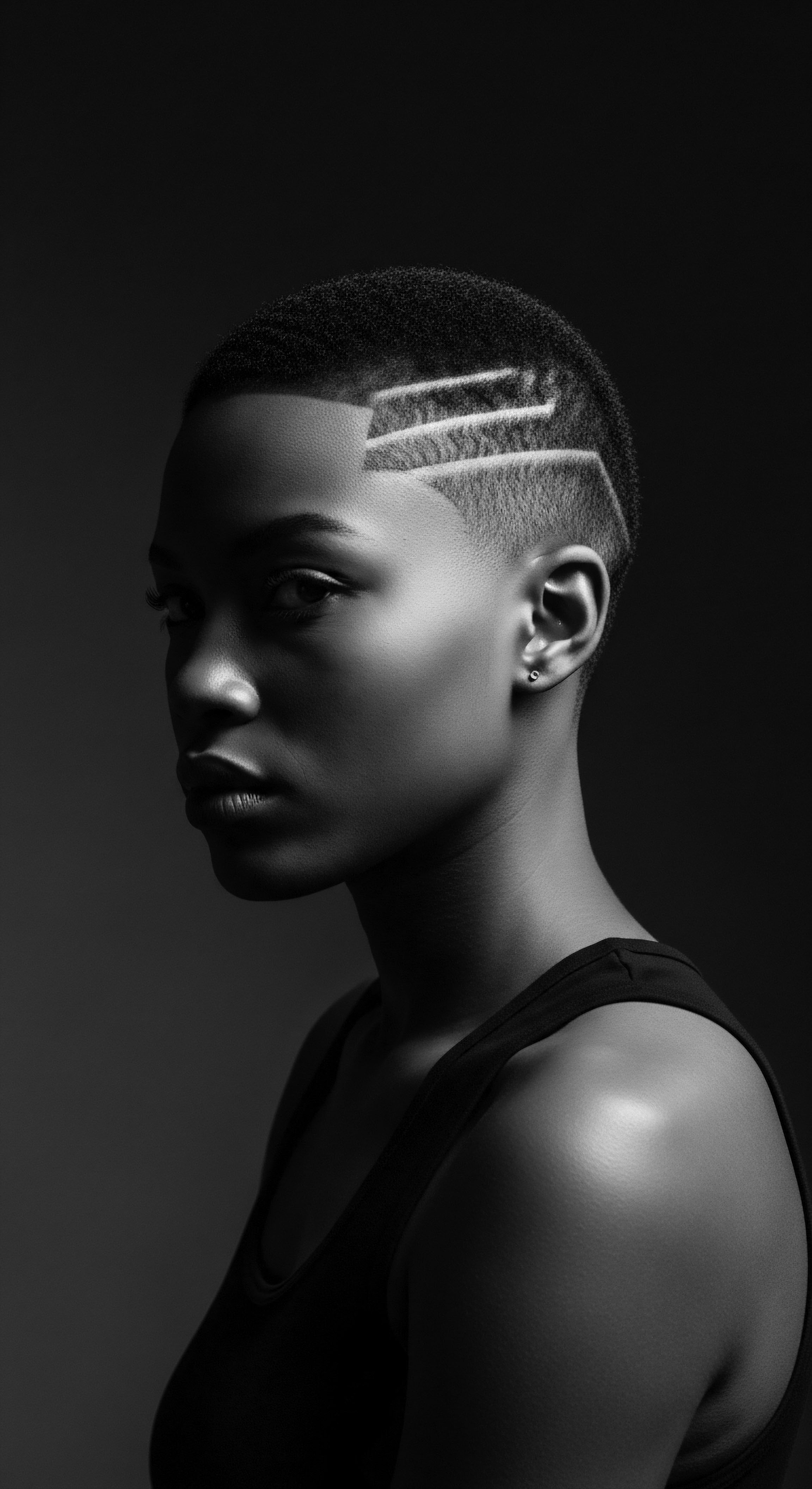
Ancestral Classification Systems and Modern Understanding
While modern classification systems categorize textured hair by curl pattern—from wavy to coily—these contemporary labels sometimes obscure the deeper historical and anthropological context. Ancestral communities did not define hair merely by its visible curl, but by its relationship to identity, lineage, and spiritual significance. Hair was a marker of belonging, a visible expression of clan, status, and experience.
Traditional knowledge often recognized the subtle variations in hair texture within a family or community, understanding them as an inherent part of a person’s being, not just a cosmetic feature. This historical perspective invites us to look beyond numerical curl types and to appreciate the spectrum of textured hair as a living archive of human diversity and adaptation.
The physical variations in hair texture are a direct result of adaptations to diverse environmental conditions encountered during human migration patterns. Hair properties like thickness, curl pattern, and how it responds to humidity are deeply tied to these ancestral climates.
| Climate Zone Equatorial Africa (Hot, High UV) |
| Typical Hair Characteristics Tightly curled, dense, often coarse. |
| Adaptive Advantage UV protection for scalp, enhanced cooling through air circulation, water conservation. |
| Climate Zone Humid Tropical Regions (High Humidity, Warm) |
| Typical Hair Characteristics Dense, water-repellant, retains natural oils. |
| Adaptive Advantage Protects hair roots from dryness, prevents moisture loss from scalp. |
| Climate Zone Colder Climates (Low UV, Cold) |
| Typical Hair Characteristics Thicker, straighter hair. |
| Adaptive Advantage Better heat retention for the scalp and body. |
| Climate Zone Hair morphology reflects a long-standing evolutionary relationship with the Earth’s varied environments. |

The Language of Hair
The lexicon surrounding textured hair has deep roots in cultural experience and heritage. While modern science provides terms like ‘keratin’ and ‘follicle’, ancestral communities possessed their own rich vocabularies for describing hair, its care, and its significance. These terms often intertwined with spiritual beliefs, social hierarchies, and daily practices.
In many African cultures, hair was a form of communication, telling stories of a person’s age, marital status, or lineage. The language used to describe a hairstyle, a grooming tool, or a ritual ingredient was not merely descriptive; it carried the weight of generations, linking present practices to a deep, inherited past.
Consider the term Kinky, once used dismissively, now reclaimed by many to describe tightly coiled hair. This word, when viewed through a heritage lens, speaks to the unique, spring-like structure that proved so effective in its ancestral environment. It hints at resilience, adaptation, and a defiance of Eurocentric beauty standards that historically sought to diminish its worth. Understanding these words and their historical baggage is part of honoring the heritage of textured hair.
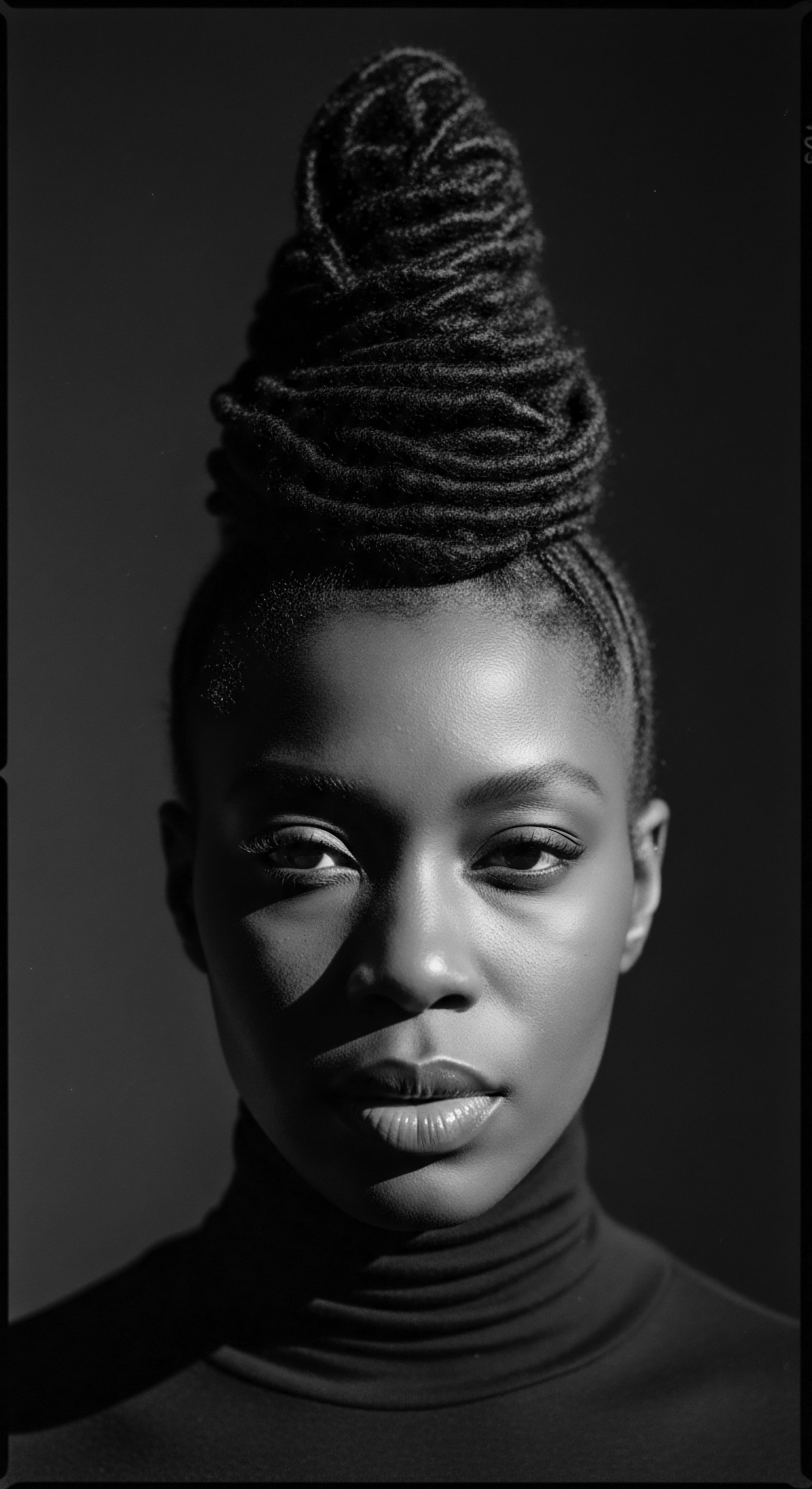
Hair Growth Cycles and Ancestral Influences
Hair growth follows a cyclical pattern ❉ an active growth phase (anagen), a transitional phase (catagen), and a resting phase (telogen). While these biological rhythms are universal, ancestral diets, climate conditions, and exposure to specific environmental stressors would have subtly influenced hair health and growth over generations. For instance, diets rich in indigenous fruits, vegetables, and proteins available in ancestral lands would have provided essential nutrients for robust hair growth. Conversely, periods of scarcity or displacement, as experienced during historical migrations or enslavement, could have introduced nutritional deficiencies that impacted hair’s vitality.
The constant exposure to intense UV radiation in equatorial climates, while prompting the development of protective hair structures, could also lead to protein degradation and melanin oxidation over time. Ancestral care practices, often involving natural oils and plant-based remedies, would have served as protective measures, mitigating environmental damage and supporting the hair’s natural growth cycles. This holistic view, connecting environmental factors with dietary practices and traditional care, offers a profound understanding of how ancestral climates shaped not only the structure but also the very life cycle of textured hair.

Ritual
The care and styling of textured hair extends far beyond simple aesthetics; it is a sacred practice, a ritual woven into the fabric of Black and mixed-race heritage. For generations, techniques, tools, and transformations have passed from elder to child, not merely as methods for managing hair, but as acts of connection, resilience, and identity. The demands of ancestral climates — sun, humidity, dust, and temperature shifts — did not just shape the hair itself; they sculpted the very rituals developed for its upkeep. These practices, honed over centuries, stand as living archives of wisdom, testifying to the ingenuity of communities adapting to their world.

Protective Styling as Heritage and Necessity
Protective styles, a cornerstone of textured hair care today, echo back to ancestral roots where they were essential for survival and communal identity. In environments with harsh sun and dry air, elaborate braiding, coiling, and twisting protected the scalp from direct solar radiation and minimized moisture loss. Styles like cornrows, locs, and various forms of twists, often seen in West African traditions, were not only functional but also communicated social status, age, and spiritual beliefs. These ancestral styles, therefore, represent a profound synthesis of cultural expression and climate adaptation.
Consider the Himba people of Namibia. Their practice of covering hair with Otjize Paste, a mixture of butterfat and ochre, serves as a remarkable case study of ancestral climate adaptation through styling. This paste not only offers protection against the harsh sun and dry winds of their environment but also carries significant cultural meaning, symbolizing beauty and spiritual connection (Bitter_Initiative_77, 2023). This enduring tradition illustrates how hair practices were deeply intertwined with environmental challenges and cultural identity, showcasing a heritage of resourcefulness.
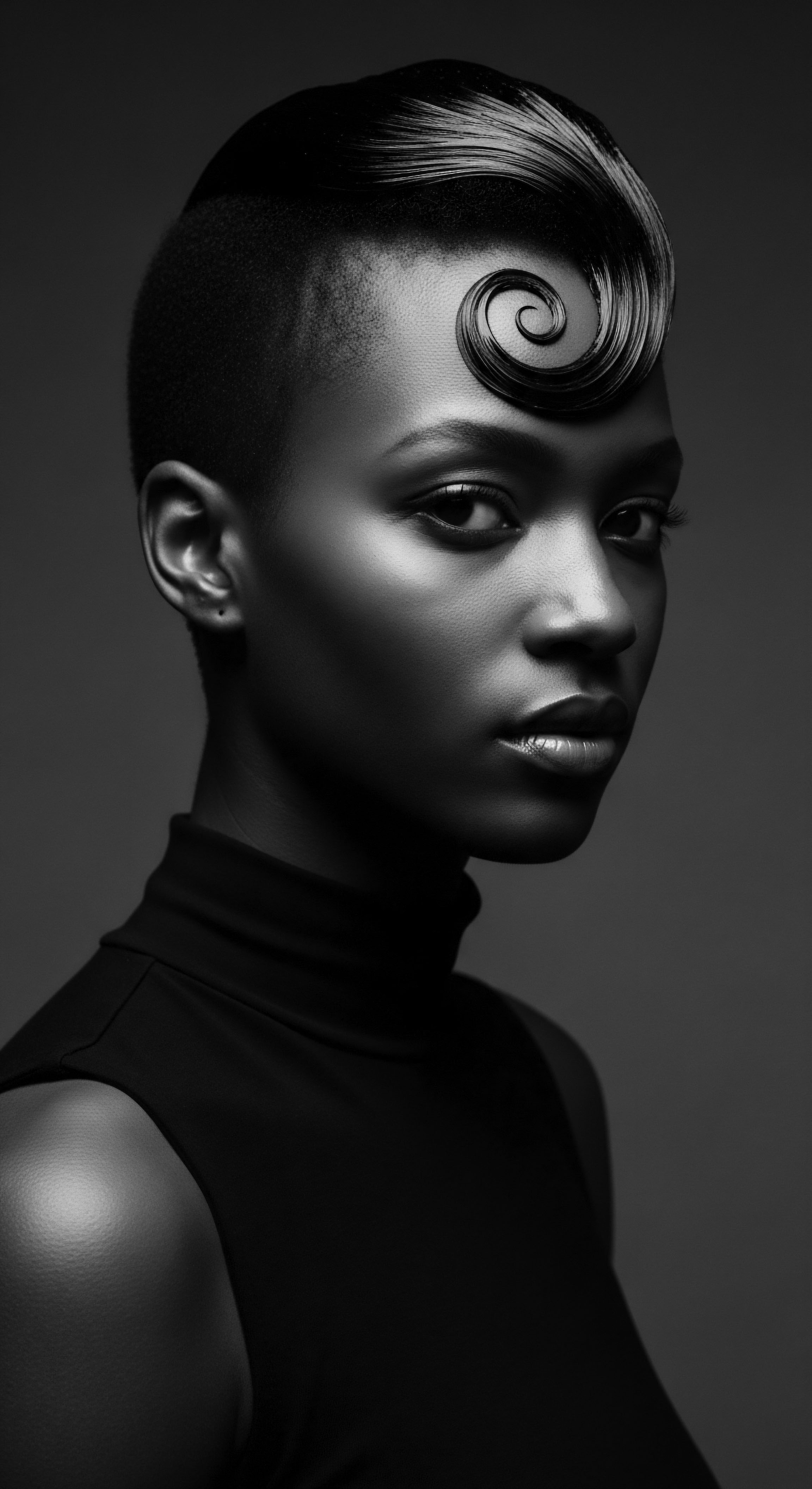
How Did Ancestral Environments Influence Natural Styling and Definition Techniques?
The very nature of textured hair, shaped by climate, naturally lends itself to diverse definition techniques. In humid climates, where hair can swell and frizz, ancestral communities would have developed methods to maintain order and moisture. Techniques of twisting, braiding, and coiling hair would have been perfected to help clump strands, reducing tangling and preserving moisture within the hair shaft. Traditional oils and butters, derived from local botanicals like shea, coconut, or palm, would have been applied to seal in hydration and provide a barrier against environmental stressors.
These techniques were not just about creating a certain look; they were about hair health and longevity in challenging conditions. The act of sectioning hair, applying natural emollients, and carefully shaping it into a defined style was a slow, deliberate practice, often performed communally. This practice highlights how ancestral communities understood their hair’s needs within its environmental context, passing down methods that still resonate with natural hair enthusiasts today.
Hair care rituals are living traditions, adapting over centuries to the demands of climate and communal life.

Wigs and Hair Extensions in Historical Context
While often perceived as modern accessories, wigs and hair extensions possess a storied past, with roots in diverse ancestral cultures. Ancient Egyptians, for example, wore wigs not only for aesthetic reasons but also for hygiene and protection from the sun. These wigs, often made from human hair or plant fibers, provided an additional layer of insulation against the intense heat and UV radiation.
In various African societies, extensions crafted from plant fibers, wool, or even other human hair strands, were used to create elaborate, symbolic hairstyles. These additions extended the hair, allowing for more intricate designs that could signify social standing or commemorate rites of passage.
The integration of such hair artistry into daily life and special occasions demonstrates a long-standing understanding of hair as a mutable canvas for cultural expression, often influenced by the need for practicality in specific climates. The materials chosen and the methods of attachment reflected local resources and ingenuity, creating a heritage of adornment that merged function with profound cultural meaning.
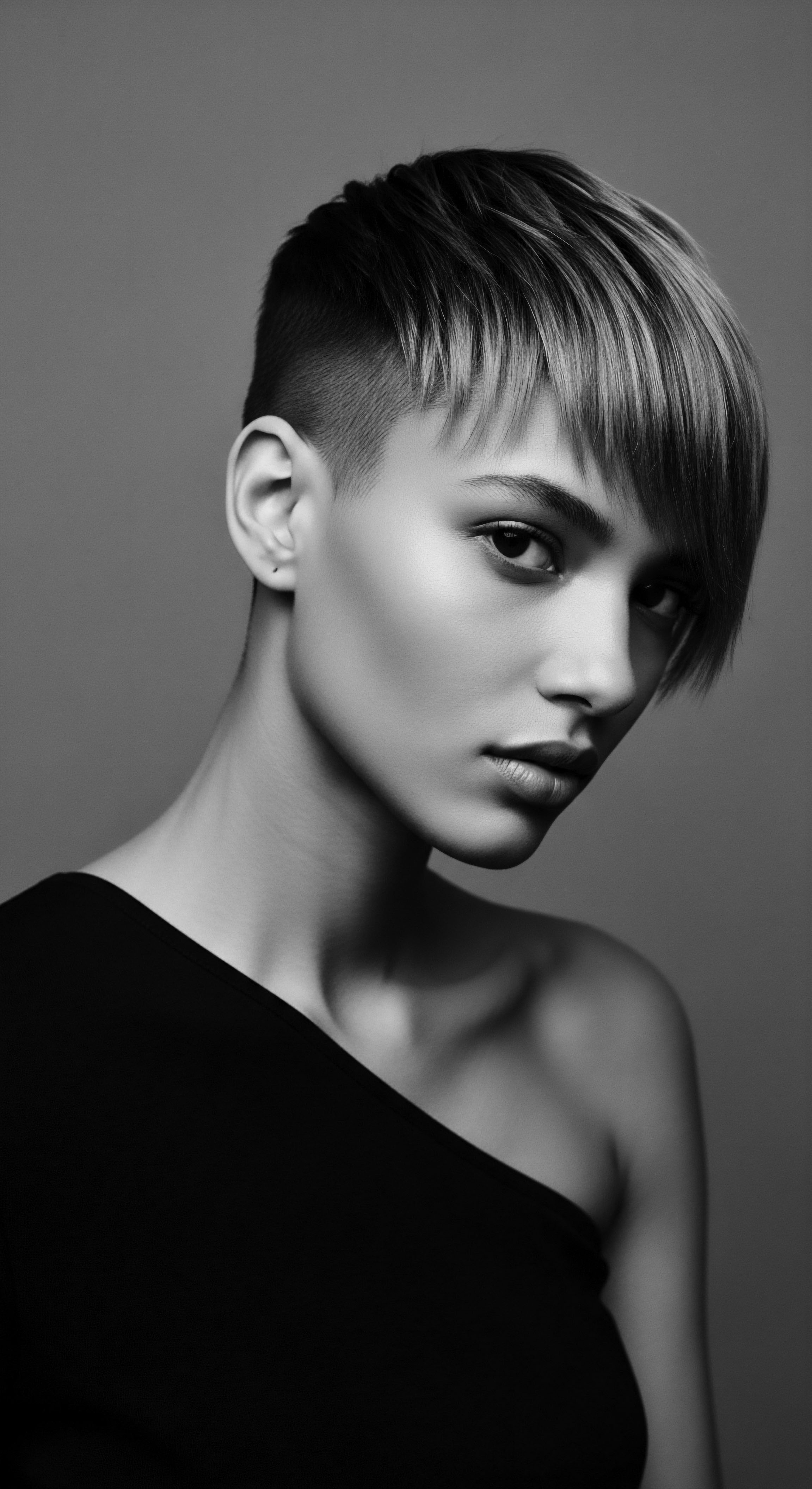
The Ancestral Hair Toolkit
The tools used in traditional hair care are as important as the techniques themselves, each designed to work with the unique properties of textured hair and the environment it inhabited.
- Combs ❉ Ancient combs, carved from wood, bone, or horn, were often wide-toothed, designed to gently detangle coiled hair without causing breakage. These tools were not mass-produced; they were often handcrafted, embodying the care and personal connection to hair maintenance.
- Fingers ❉ Beyond manufactured tools, the most fundamental and universally accessible tool was, and remains, the human hand. Finger detangling and styling, a practice still advocated today, avoids undue stress on delicate coils, aligning with the gentle, intentional care necessary for textured hair.
- Natural Materials ❉ Leaves, roots, and fibrous plants were processed into tools for sectioning, twisting, or securing hair. Clay, ash, and ground plants, as mentioned in ancient Egyptian practices, served as styling powders, absorbing excess oil and sweat, keeping hair clean and voluminous.
- Hairpicks ❉ The Afro Comb, or hairpick, held symbolic weight in Kemet and West African cultures, serving as both a decorative status symbol and a functional tool for maintaining hair volume and shape.
The tools of hair care, therefore, are not just implements; they are artifacts of heritage, each one bearing witness to generations of wisdom passed down to nurture and celebrate textured hair.
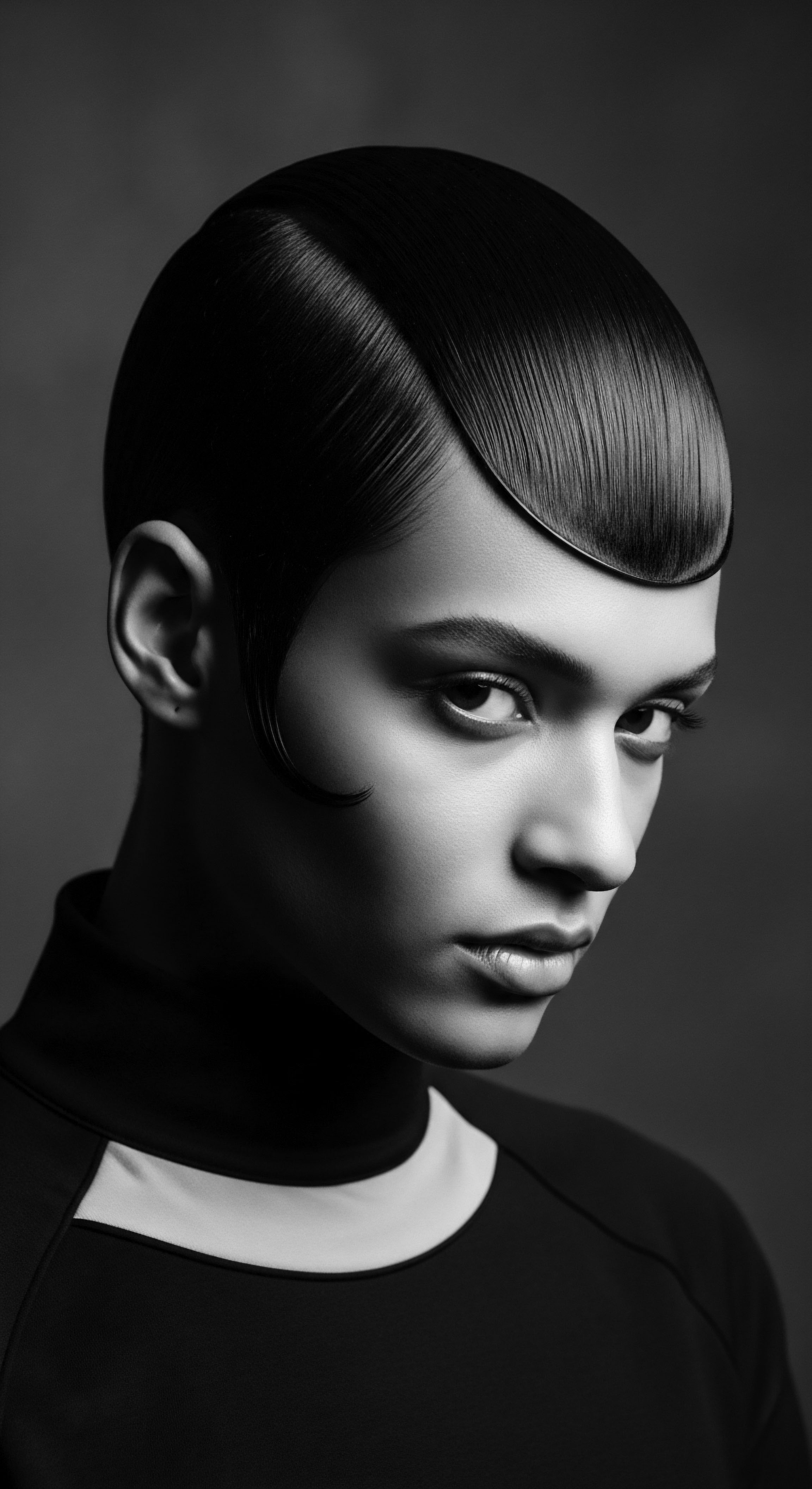
Relay
The enduring legacy of ancestral climates lives on in our understanding of textured hair care, informing a regimen of radiance that bridges ancient wisdom with contemporary scientific insight. Our hair, a biological inheritance, carries a deep memory of the environments that shaped it. To truly care for it, we look to the wisdom of those who came before us, understanding that their solutions were often direct responses to the climate and available resources. This connection to heritage guides us toward holistic practices, recognizing that the health of our hair mirrors the wellbeing of our entire self.
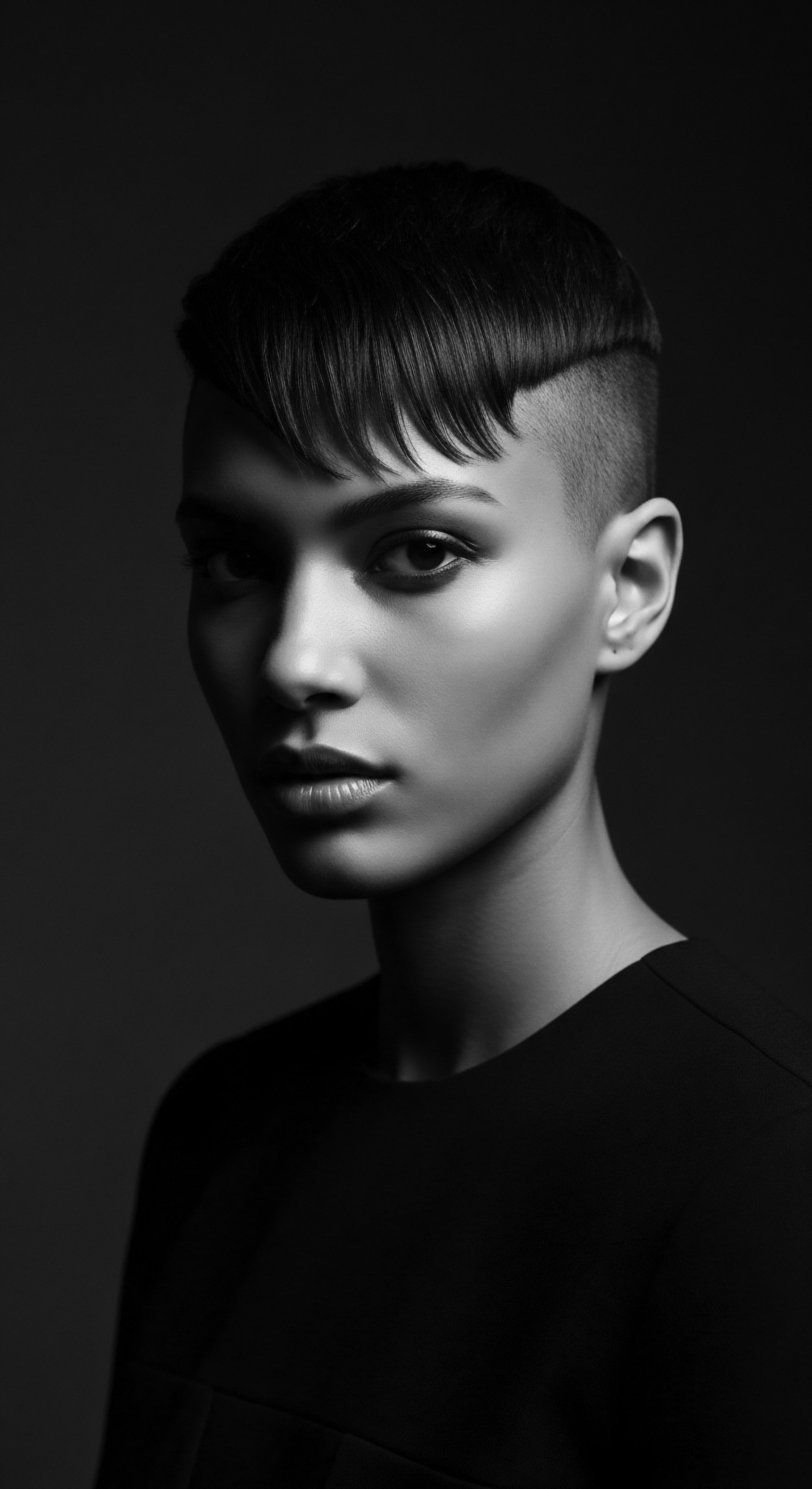
Building Personalized Regimens Rooted in Ancestral Wisdom
Crafting a personalized textured hair regimen today means drawing from a wellspring of ancestral knowledge. The goal is not to mimic ancient practices precisely, but to extract their principles and adapt them for modern life. Ancestral communities understood the importance of consistency, gentle handling, and the power of natural ingredients to protect hair from environmental stressors. For example, West African traditions used oils and butters to moisturize hair in hot, dry climates, pairing them with protective styles to maintain health and length.
This deep understanding suggests a core philosophy ❉ hair care is an act of preservation, a gentle hand guiding strands through their journey. A successful regimen acknowledges the hair’s susceptibility to dryness and breakage, a characteristic amplified by environmental challenges over time. It embraces the concept of low manipulation, reducing stress on the hair, a practice passed down through generations who knew the fragility of their coils.

What Nighttime Rituals Protected Ancestral Hair?
The practice of protecting hair at night, now symbolized by the bonnet, possesses a rich historical lineage. While bonnets in Europe served to keep heads warm, headwraps in African regions, known as Dukus or Doek, were traditional attire for centuries, reflecting wealth, marital status, and even emotional states. During periods of enslavement, these coverings took on a grim significance, used to strip identity, yet Black women reclaimed them as tools of creative expression and cultural resistance.
The functional purpose of these night coverings was clear ❉ to prevent friction, maintain moisture, and preserve hairstyles. Sleeping on rough surfaces, like coarse bedding, can strip hair of its natural oils and cause tangling. Satin or silk linings, now common in bonnets, allow hair to glide freely, preventing breakage and moisture loss.
This foresight, to safeguard hair during rest, speaks to an ancestral understanding of hair health that transcended mere appearance, recognizing the need for continuous protection against daily wear, tear, and environmental impacts. The bonnet, therefore, embodies a heritage of practical wisdom and enduring resilience.
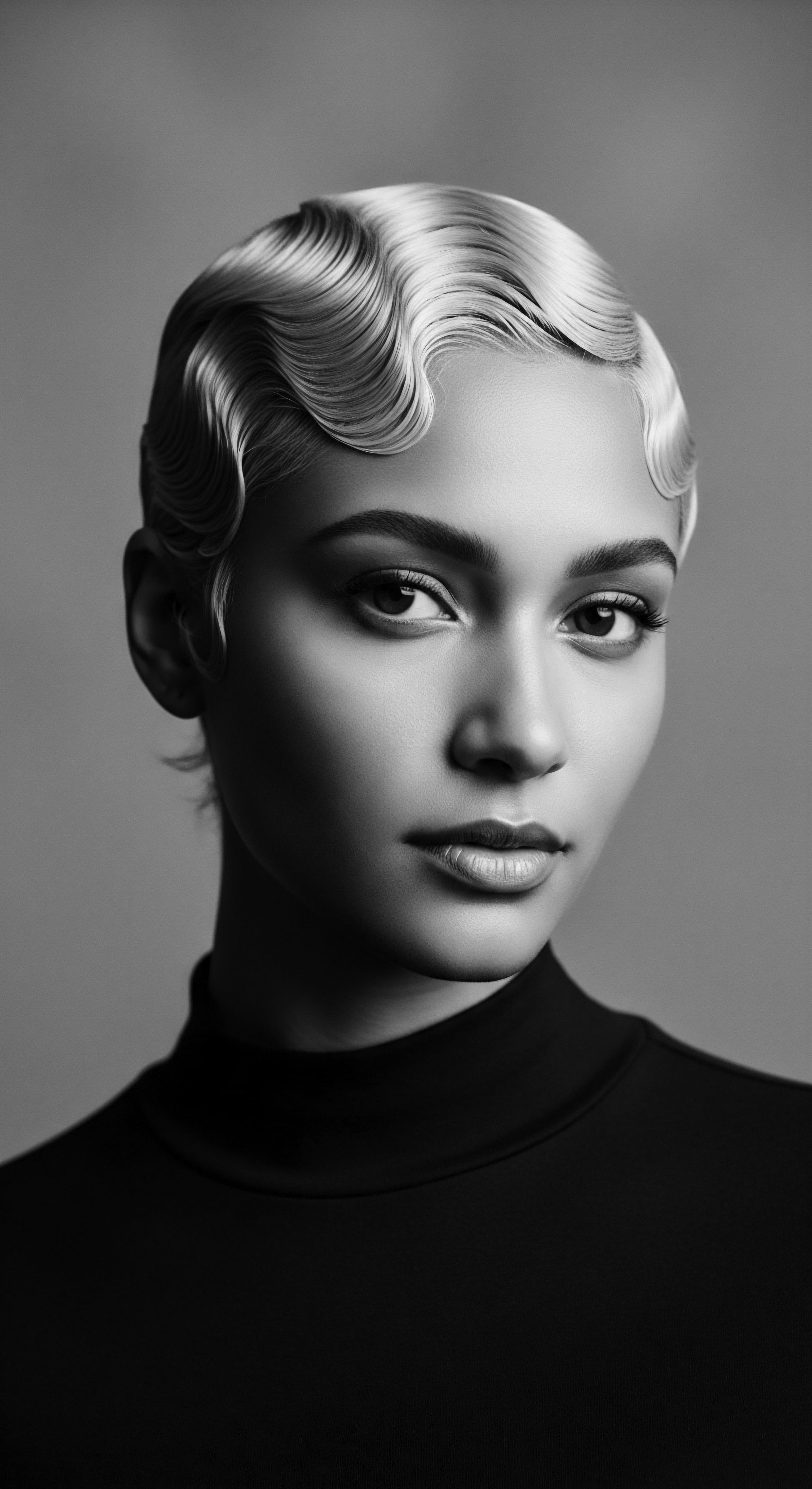
Ingredient Deep Dives for Textured Hair Needs from the Past
The ancestral environments provided a living pharmacy, with plants offering the very ingredients that formed the basis of early hair care. Understanding these traditional ingredients reveals an intimate knowledge of local ecosystems and the specific needs of textured hair in those climates.
- Shea Butter ❉ Derived from the shea tree native to West Africa, Shea Butter was used for its incredible moisturizing and protective properties. In hot, often dry, climates, it provided a barrier against moisture loss and offered natural sun protection for skin and hair.
- Palm Oil ❉ Another staple from West African regions, Palm Oil was valued for its deep conditioning abilities. Its richness helped to soften and nourish textured strands, which could otherwise become brittle in challenging climates.
- Baobab Oil ❉ From the iconic African baobab tree, this oil is rich in fatty acids and vitamins. It would have been utilized for its restorative qualities, helping to maintain hair elasticity and prevent dryness in arid conditions.
- Chebe Powder ❉ Originating from the Basara tribe in Chad, Chebe Powder is a blend of herbs traditionally applied with an oil mixture to the hair. This practice is renowned for promoting length retention by strengthening strands and reducing breakage, particularly important in regions with wind and dust.
- Rhassoul Clay ❉ Found in the Atlas Mountains of Morocco, Rhassoul Clay was a traditional cleansing agent. Its mineral-rich composition allowed it to gently purify the scalp and hair, absorbing impurities without stripping essential moisture.
These ancestral ingredients represent a sophisticated, empirically developed approach to hair care, where direct environmental challenges were met with natural, localized solutions. Their continued relevance today speaks to their inherent efficacy and the enduring power of inherited wisdom.
Ancient botanical wisdom, adapting to local climates, laid the groundwork for today’s hair care ingredients.
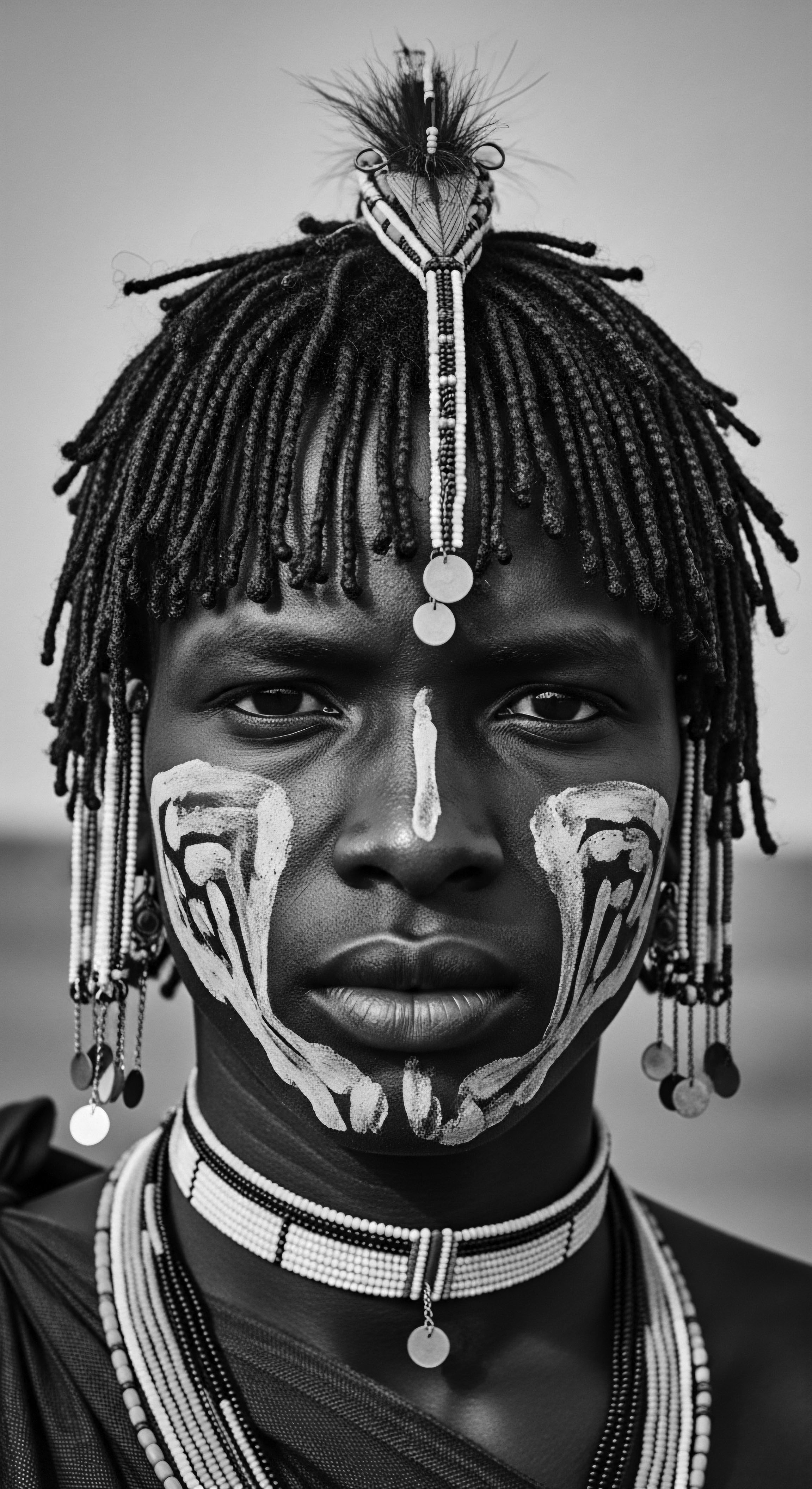
Problem Solving for Textured Hair with Ancestral Solutions
Textured hair, with its unique structure, presents specific challenges that ancestral practices addressed with remarkable foresight. Issues such as dryness, breakage, and tangling were common, particularly in climates that stripped moisture or exposed hair to constant elemental stress. The solutions devised by forebears were often multi-pronged, blending topical applications with styling techniques.
For instance, the elliptical cross-section of textured hair can make it more prone to tangling and breakage compared to straight hair. In ancestral communities, this was mitigated by regular, gentle detangling with natural wide-toothed tools or fingers, followed by the application of rich oils and butters to reduce friction. Protective styles were the ultimate problem-solvers, minimizing manipulation and exposure to the elements, thereby reducing overall damage.
The generational ritual of “greasing” the hair, a tradition passed down from African ancestors using natural products, addressed scalp dryness and provided nourishment. This proactive approach to hair health, anticipating environmental challenges and structural vulnerabilities, is a profound aspect of textured hair heritage.
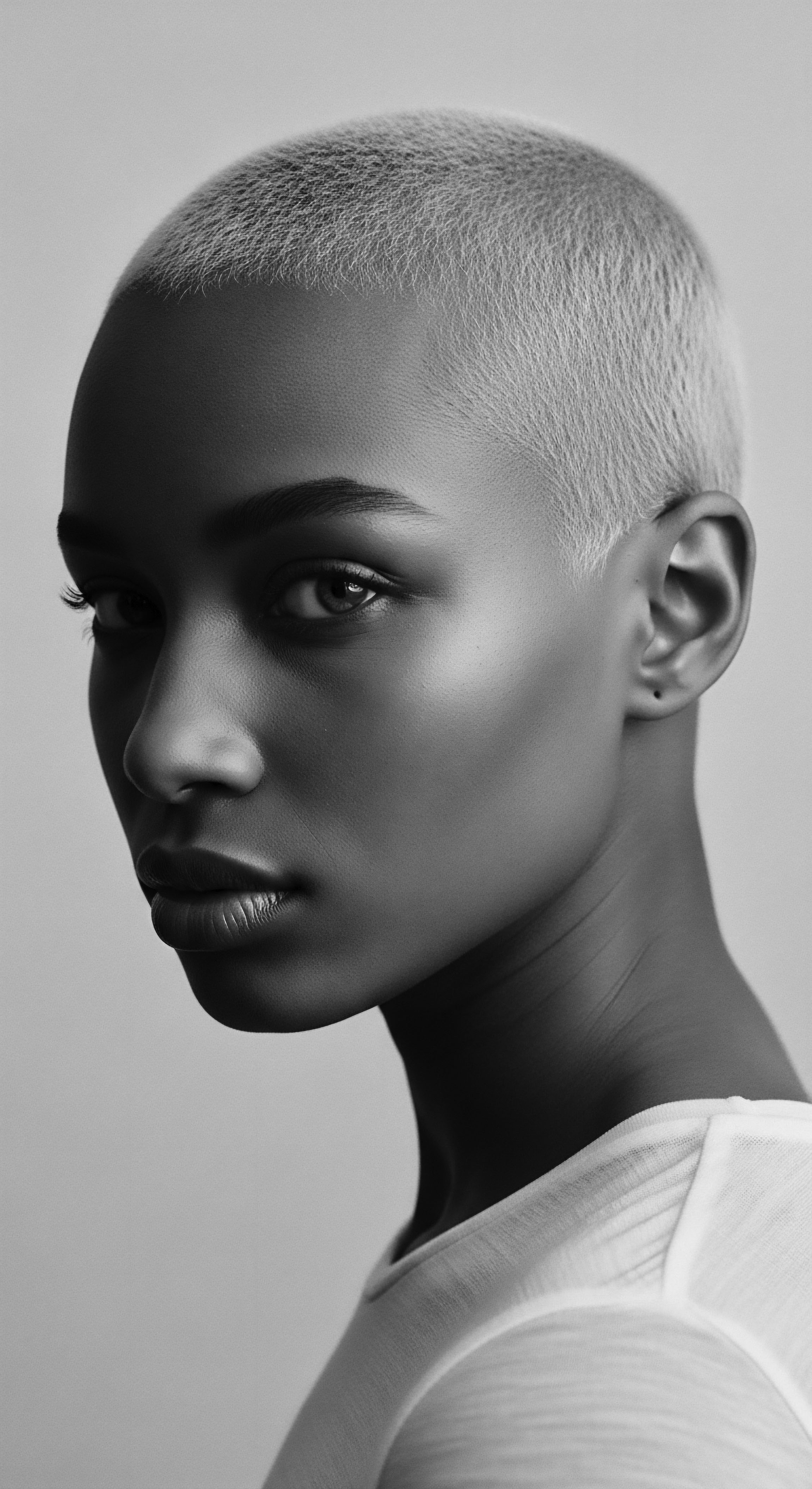
Holistic Influences on Hair Health Through an Ancestral Lens
Ancestral wellness philosophies did not separate hair health from overall bodily and spiritual wellbeing. The health of one’s hair was often seen as a reflection of inner harmony, influenced by diet, hydration, stress levels, and connection to community. In climates where water was a precious commodity, its conservation was paramount, and practices that minimized hair washing while maximizing hydration through topical applications were intuitive. The communal aspects of hair care, where styling was a bonding experience, fostered mental and emotional wellbeing, underscoring the deep human element of heritage.
Modern science now validates many of these traditional insights, recognizing the systemic impact of nutrition, stress, and environmental pollution on hair vitality. Pollution, for example, can contribute to dryness, scalp issues, and even hair loss by generating reactive oxygen species and damaging hair proteins. Ancestral solutions, with their reliance on natural anti-inflammatory and antioxidant-rich ingredients, offered protection against such external aggressors. This holistic view, inherited from our forebears, reminds us that caring for textured hair is a continuous conversation between our biology, our environment, and our deep cultural roots.
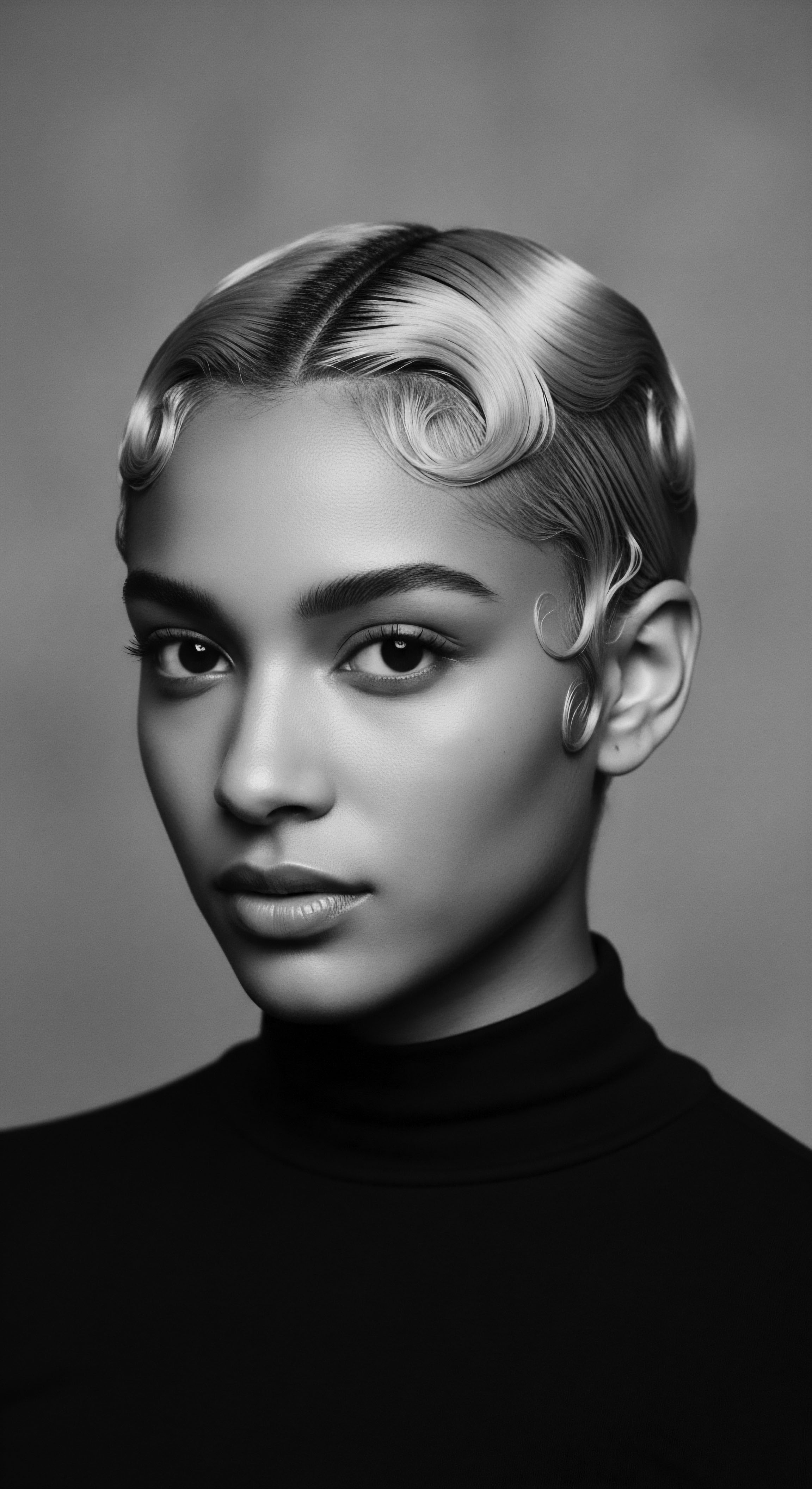
Reflection
As we stand at this precipice of understanding, having journeyed through the ancient climates that sculpted the very helix of textured hair, a profound truth emerges ❉ our strands are more than mere adornment. They are living archives, whispering histories of sunlight, wind, and the ingenious adaptation of those who came before us. This is the ‘Soul of a Strand’ in its truest sense—a recognition that every curl, every coil, carries the genetic memory of ancestral lands and the resilience of a heritage that would not be denied.
The environments of equatorial Africa, with their intense solar radiation and unique humidities, did not just influence the physical characteristics of hair; they instigated a legacy of communal care, ritualized protection, and creative expression. The tightly wound spirals, once dismissed or misunderstood, are now celebrated as a testament to biological brilliance, a natural sunshield and cooling system perfected over millennia. We see this wisdom echo in the enduring use of traditional oils and butters, in the geometry of protective styles, and in the communal spaces where hair is tended and stories are shared.
Our exploration reveals that the science of textured hair is inextricably bound to its history. The chemical composition, the follicular shape, the very way hair responds to moisture and light—each element points back to an ancestral dialogue with the Earth. This dialogue extends beyond the purely biological, encompassing the ingenuity of human cultures that devised sophisticated systems of care, using the bounty of their surroundings to nourish and honor their crowning glory.
The journey of textured hair through time and across continents, particularly through the Black and mixed-race experience, is one of constant adaptation, cultural preservation, and identity formation. Despite attempts to diminish or erase this heritage, the strands themselves bear witness, retaining their inherent characteristics and inspiring new generations to reconnect with this profound ancestral legacy. To care for textured hair today is to participate in this continuum, to acknowledge the whispers of the past, and to stride forward with pride, knowing that our hair is a vibrant, living library of resilience and beauty, forever connected to the climates that first shaped its extraordinary form.

References
- Byrd, A. D. & Tharps, L. L. (2001). Hair Story ❉ Untangling the Roots of Black Hair in America. St. Martin’s Press.
- Chaplin, G. (2004). The evolution of human skin coloration. Annual Review of Anthropology, 33, 585-603.
- Ebling, F. J. (1985). The biology of skin. In R. H. Champion, T. G. Burton, F. J. Ebling, & W. B. Wilkinson (Eds.), Rook’s Textbook of Dermatology (pp. 37-147). Blackwell Scientific Publications.
- Jablonski, N. G. (2012). Skin ❉ A Natural History. University of California Press.
- Jablonski, N. G. & Chaplin, G. (2014). The Evolution of Skin Pigmentation and Hair Texture in People of African Ancestry. In K. C. R. Kumar, & R. J. Newton (Eds.), Dermatology of Black Skin ❉ A Guide to the Diagnosis and Management of Skin, Hair, and Nail Diseases in Patients with Skin of Color (pp. 3-19). Springer.
- Lasisi, T. Adeyemi, N. A. & Jablonski, N. G. (2023). The biophysical properties of human scalp hair and its role in thermoregulation. Proceedings of the National Academy of Sciences, 120(25), e2301760120.
- Litman, T. & Stein, W. D. (2023). The origin of hair ❉ The evolution of the trichocyte. Research Outreach, 140, 20-23.
- Montagna, W. (1985). The Evolution of Human Skin. Cambridge University Press.
- Westgate, G. E. Ginger, R. S. & Green, M. R. (2019). The what, why and how of curly hair ❉ a review. Experimental Dermatology, 28(S1), S4-S10.
